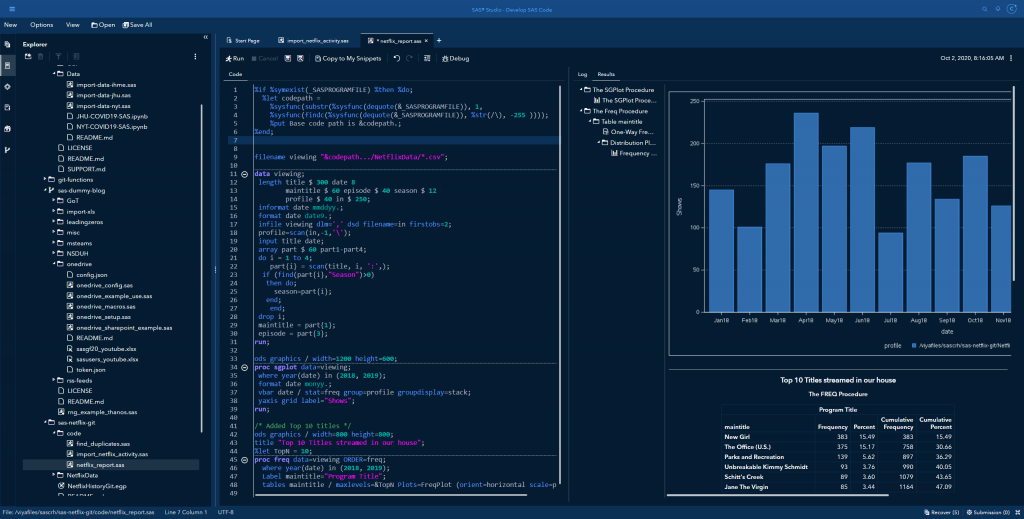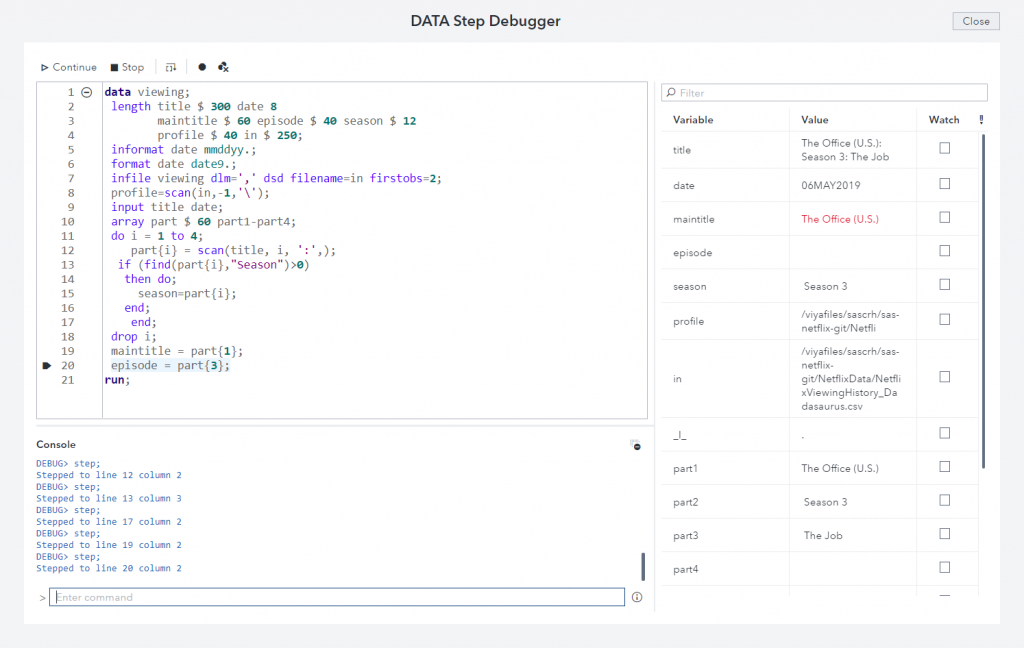As a SAS consultant I have been an avid user of SAS Enterprise Guide for as long as I can remember. It has been not just my go-to tool, but that of many of the SAS customers I have worked with over the years.
It is easy to use, the interface intuitive, a Swiss Army knife when it comes to data analysis. Whether you’re looking to access SAS data or import good old Excel locally, join data together or perform data analysis, a few clicks and ta-dah, you’re there! Alternatively, if you insist on coding or like me, use a bit of both, the ta-dah point still holds.
SAS Enterprise Guide, or EG as it is commonly known as, is a mature SAS product with many years of R&D, an established user base, a reliable and trusted product. So why move to SAS Studio? Why should I leave the comfort of what works?
SAS ENTERPRISE GUIDE vs. SAS STUDIO | A COMPARISONFor the last nine months I have been working with one of the UK’s largest supermarket answering that exact question as they make that journey from SAS Enterprise Guide to SAS Studio. EG is used widely across several supermarket operations, including:
- supply chain (to look at wastage and stock availability)
- marketing analytics (to look at customer behaviour and build successful campaigns)
- fraud detection (to detect misuse of vouchers).
What is SAS Studio?
Firstly, let's answer the "what is SAS Studio" question. It is the browser-based interface for SAS programmers to run code or use predefined tasks to automatically generate SAS code. Since there is nothing to install on your desktop, you can access it from almost any machine: Windows or Mac. And SAS Studio is brought to you by the same SAS R&D developers who maintain SAS Enterprise Guide.

1. Still does the regular stuff
It allows you to access your data, libraries and existing programs and import a range of data sources including Excel and CSV. You can code or use the tasks to perform analysis. You can build queries to join data, create simple and complex expressions, filter and sort data.
But it does much more than that... So what cool things can you do with SAS Studio?
2. Use the processing power of SAS Viya
SAS Studio (v5.2 onwards) works on SAS Viya. Previously SAS 9 had the compute server aka the workspace server as the processing engine. SAS Viya has CAS, the next generation SAS run time environment which makes use of both memory and disk. It is distributed, fault tolerant, elastic and can work on problems larger than the available RAM. It is all centrally managed, secure, auditable and governed.
3. Cool new functionality
SAS Studio comes with many enhancements and cool new functionality:
- Custom tasks. You can easily build your own custom tasks (software developer skills not required) so others without SAS coding skills can utilise them. You can find a guide to getting started here.
- Scheduling. The days of scheduling and needing to leave your PC on are gone! You can now set up a program or code from a task to schedule and it will run as needed.
- Code version control with Git. SAS Studio includes comprehensive integration with Git, a system for tracking changes and managing version control among multiple users. Learn more in this Ask the Expert session.
- Code snippets. It comes with pre-defined code snippets, commonly used bits of code that you can save and reuse. Additionally, you can create your own which you can share with colleagues. Coders love that these code snippets can be used with keystroke abbreviations.
- Background submit. This allows you to run code in the background whilst you continue to work.
- DATA step debugger. First added into SAS Enterprise Guide, SAS Studio now offers an interactive DATA step debugger as well.
- Flexible layout for your workspace, You can have multiple tabs open for each program, and open multiple datasets and items.
- FEDSQL. The query window creates PROC FEDSQL code, convenient for SAS Viya and better query performance.

4. Seamlessly access the full suite of SAS Viya capabilities
A key benefit of SAS Studio is the ease of which you can move from writing code to doing some data discovery, visualisation and model building. Previously in the SAS 9 world you may have used EG to access and join your data and then move to SAS Enterprise Miner, a different interface, installed separately to build a model. Those days are long gone.
To illustrate the point, if I wanted to build a campaign to see who would respond to a supermarket voucher, I could access my customer data and join that to my transaction and products data in SAS Studio. I could then move into SAS Visual Analytics to identify the key variables I would need to build an analytical model and even the best model to build. From there I would move to SAS Visual Data Mining and Machine Learning to build the model. I could very easily use the intuitive point-and-click pipeline interface to build several models, incorporating an R or Python to find the best model. This would all be done within one browser-based interface and the data being loaded only once.
This tutorial from Christa Cody illustrates this coding workflow in action.
The Road to SAS Studio
SAS Studio clearly has a huge number of benefits, it does the regular stuff you would expect, but additionally brings a host of cool new functionality and the processing power of SAS Viya, not to mention allowing you to move seamlessly to the next steps of the analytical and decisioning journey including model building, creating visualisations, etc.
Change management + technical enablement = success
Though adoption of modern technology can bring significant benefits to enterprise organisations as this supermarket is seeing, it is not without its challenges. Change is never easy and the transition from EG to Studio will take time. Especially with a mature, well liked and versatile product like EG.
The cultural challenge that new technology provides should not be underestimated and can provide a barrier to adoption. Newer technology requires new approaches, a different way of working across diverse user communities many of whom have well established working practices that may in some cases, resist change. The key is to invest the time with the communities, explain how newer technology can support their activities more efficiently and provide them with broader capability.
LEARN MORE | SAS STUDIO SUPPORT CENTER
3 Comments
What features or functionality of Enterprise Guide still are not yet available in SAS Studio? Also, what were the main challenges that had to be overcome by the supermarket in order to transition to using SAS Studio? Did they transition completely off of EG or do they have some users who still use EG? What were some of their change management approaches and what would they have done differently, if they knew before what they know now?
Hi Tamara,
Jumping in to answer for Venessa (she's away). I cannot answer about the specific customer scenario, but in my experience the biggest challenges for transition are:
Proc Datasets is called the Swiss Army Knife of SAS procedures. You didn't mention the source of your analogy.